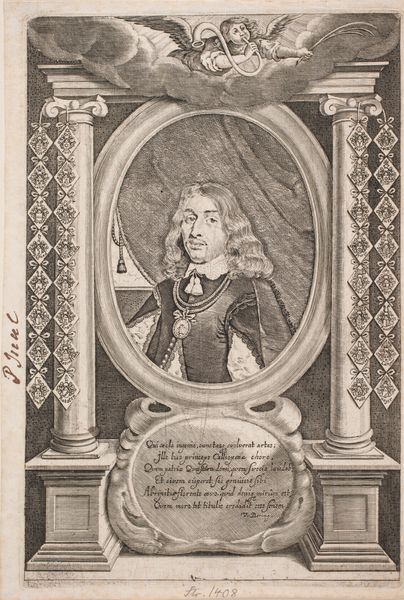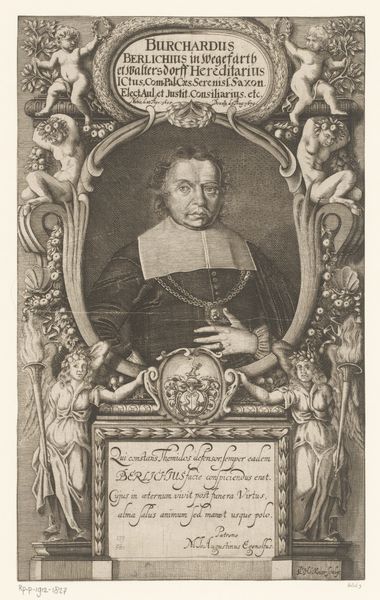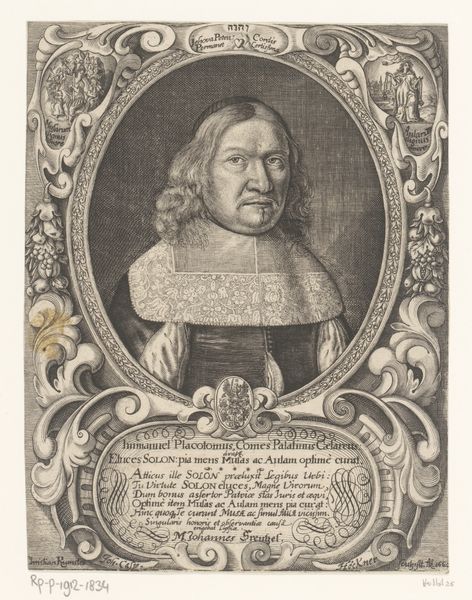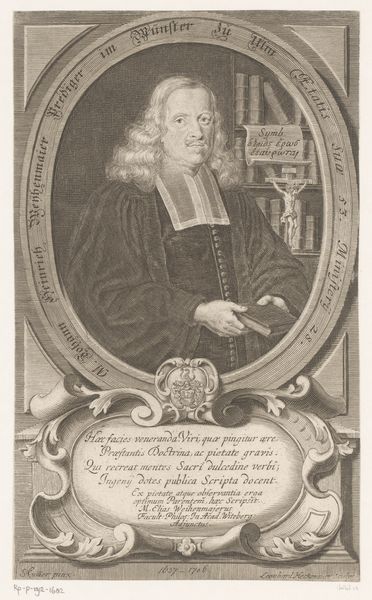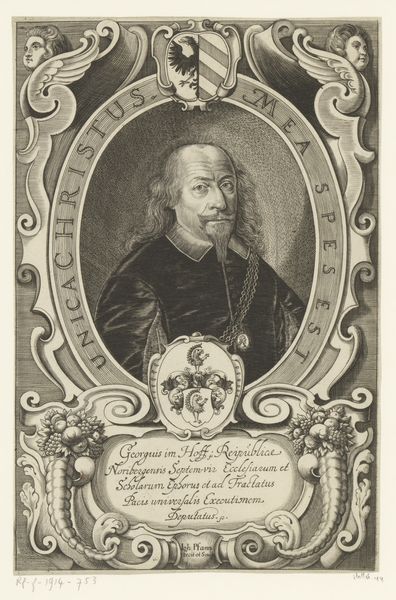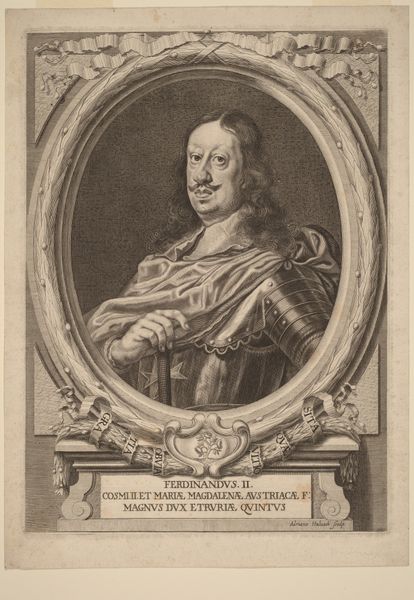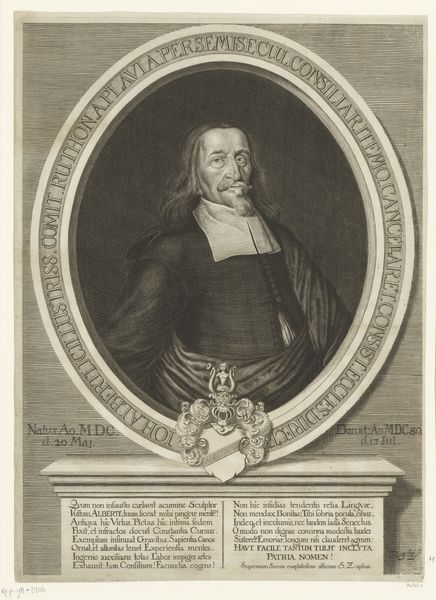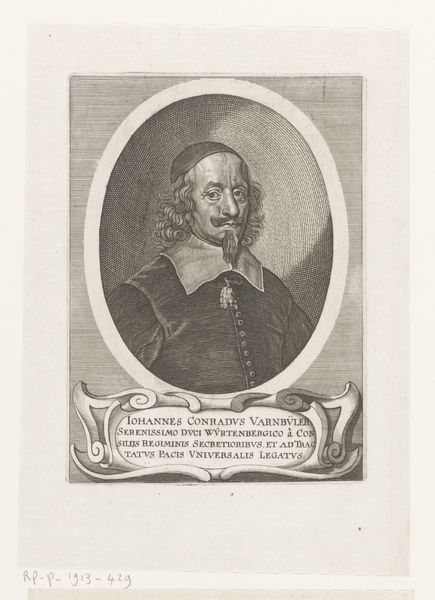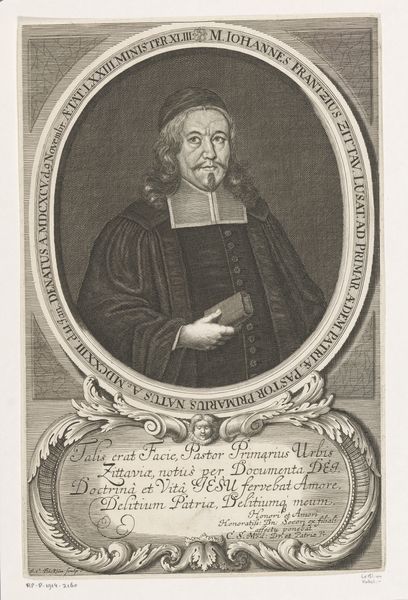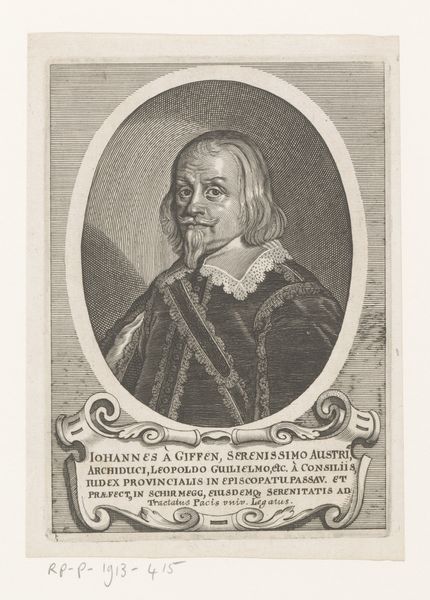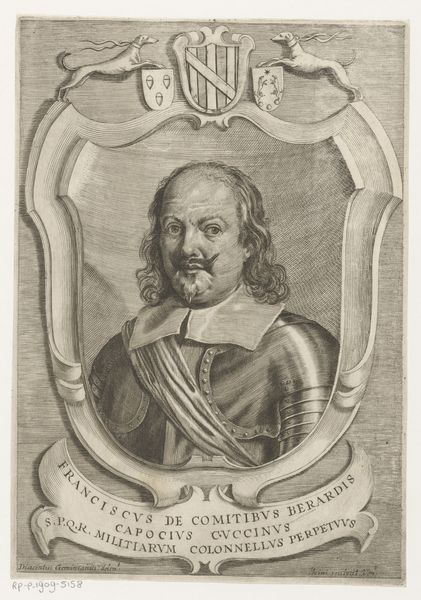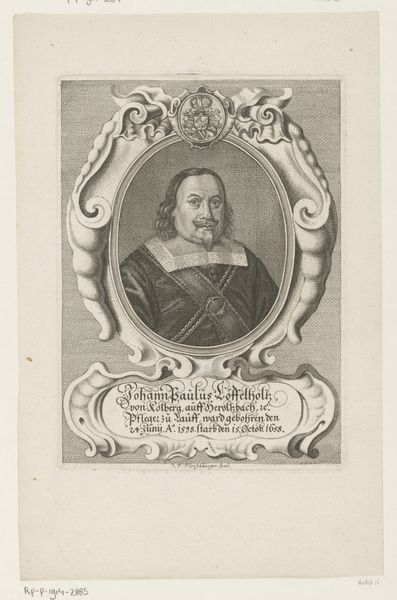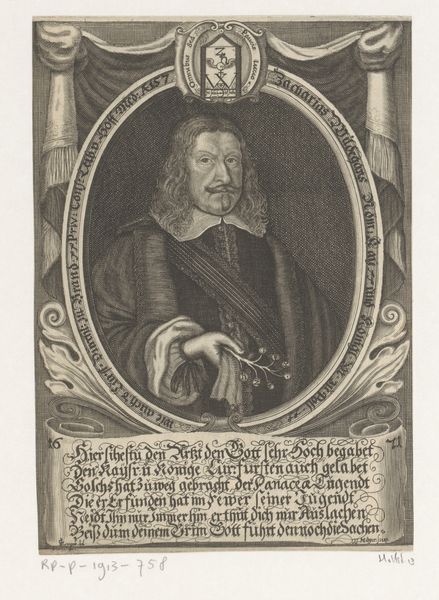
print, engraving
#
baroque
# print
#
line
#
history-painting
#
engraving
#
realism
Dimensions: 202 mm (height) x 147 mm (width) (bladmaal)
Curator: The Statens Museum for Kunst holds this fascinating print titled *Johann Adam von Kielmannseck*. Created in 1656 by Christian Rothgiesser, it is an engraving rendered in line, very much in the style of the Baroque. Editor: It has a real formal feeling about it, a deliberate stiffness, almost, as if the very lines themselves were announcing the importance of the subject. What strikes you first? Curator: Definitely the man’s self-assured gaze. He is adorned with symbols of status: cherubs overhead, elaborate frame, and columns suggesting classical power, further emphasized by the Latin phrases. He’s not just a man; he is an idea of governance and legacy. Note the portrait within the portrait—a deliberate play with image and self-representation. Editor: The amount of labor required to produce such an intricate image—each line carefully etched. This would have been a time-consuming process, and the physical act of engraving seems integral to communicating a message about enduring power. How did these prints function as objects within their society? Curator: Exactly, consider it within a context where printed imagery had expanding reach. The portrait, designed for distribution, reinforces Kielmannseck's identity but also the values of the political structure around him. Notice the way Christian Rothgiesser merges realistic representation with symbolic elements. It underscores a visual rhetoric designed to instill respect and, perhaps, a bit of awe. Editor: And it's compelling to think about who handled it—who would have owned or traded such prints? Its value extended beyond pure aesthetics; this artwork served as an accessible statement of power for collectors of various standings, almost like political propaganda or today’s carefully managed digital image. It makes you think about access and the art market back then. Curator: Absolutely. Beyond pure likeness, prints of this type created a memorable presence in a time before photography, solidifying legacies in households and civic spaces alike. Editor: It really provides food for thought—examining these layered dimensions makes experiencing this historical portrait feel much richer.
Comments
No comments
Be the first to comment and join the conversation on the ultimate creative platform.
